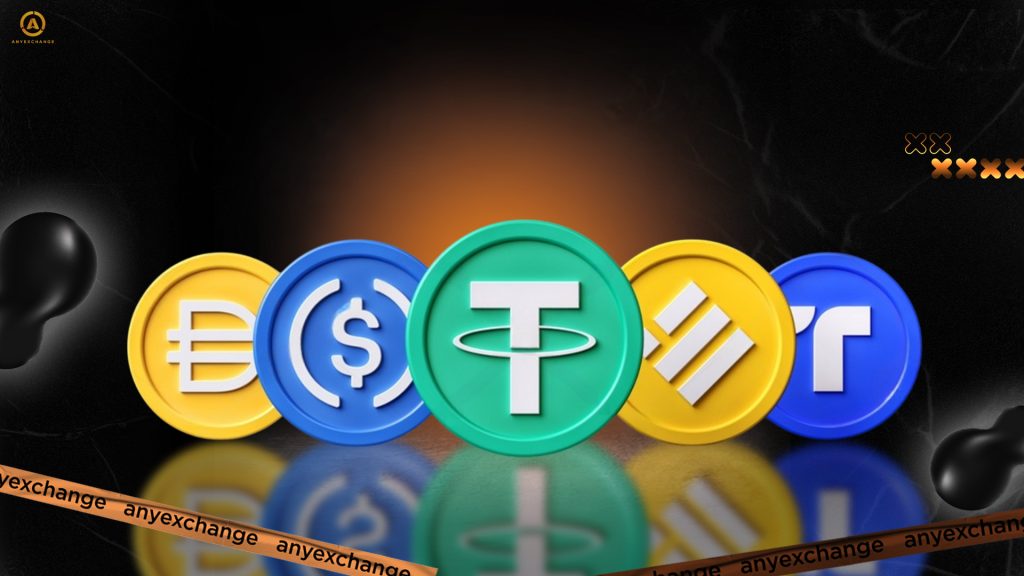
Stablecoins are a special type of cryptocurrency designed to minimize volatility by being linked to fiat money, precious metals or other assets. In recent years, stablecoins have grown rapidly in popularity around the world, and their total capitalization has already reached hundreds of billions of dollars.
Today, stable cryptocurrencies and banks are forced to coexist in the same financial space, where stablecoins act as the most functional digital analogues of traditional money. Their influence extends far beyond the crypto industry, affecting payment systems, international settlements, and even government monetary policy.
In this article, we will explore whether stablecoins are truly a revolution that will bring positive change to the global financial systеm, or whether they pose a threat to traditional banking structures. We will look at the main types of stablecoins, their benefits and risks, and the impact of stablecoins on traditional finance.
What are stablecoins

Stablecoins are cryptocurrencies whose exchange rate is stabilized by being pegged to traditional assets. Their basic purpose and value is to eliminate the high volatility inherent in traditional digital currencies. The key advantage of stablecoins over other cryptocurrencies is that each issued token is backed by a real asset, be it fiat currency, precious metals or a basket of other cryptocurrencies. This makes them a more reliable means of storing value, and they offer convenience of settlement due to their digital nature and rapid turnover.
Types of Stablecoins

Fiat Stablecoins
This is the most common type of stablecoin, widely used for trading on cryptocurrency exchanges and international settlements. Fiat Stablecoins:
- Pegged to traditional currencies (such as the U.S. dollar) and backed by corresponding reserves at banks or other financial institutions.
- Issued by centralized fintech companies such as Tether (USDT), USD Coin (USDC) and Binance USD (BUSD), which commit to holding equivalent amounts of fiat money in their accounts.
- Their exchange rate is usually maintained at a 1:1 ratio to the pegged asset, but deviations are possible in times of market stress.
Asset-backed stablecoins

This type of stablecoin is backed by any other asset: precious metals, oil, or other tangible assets. A prime example is Tether Gold (XAUT) and Paxos Gold (PAXG) — each token of such stablecoins corresponds to a certain amount of physical gold stored in certified vaults. This type of stablecoin appeals to investors who want to preserve the value of their assets by using digital instruments instead of physically storing gold or other resources. Unlike fiat stablecoins, the exchange rate of these assets depends on the market value of the underlying resource, not on fiat currencies.
Algorithmic Stablecoins
These are decentralized stable coins that are not backed by reserve assets. Their price is maintained by complex automatic algorithms and smart contracts. Their mechanism works according to the principle of supply and demand regulation: when the rate increases, the systеm issues new tokens, and when it decreases, it burns excess coins, thus balancing the value. The DAI token, which is secured by pledged cryptocurrency assets (ETH, USDC, etc.), can be given as the most vivid example, and its price is stabilized by the mechanism of liquidation and issuance of new tokens.
Despite all the advantages offered by the fully decentralized nature of this type of asset, the weakness of algorithmic coins is a higher vulnerability to liquidity crises and an increased risk of losing the target value peg, especially during periods of market turmoil.
Why are stablecoins gaining popularity?
Centralized and decentralized stablecoins continue to conquer the financial marketplace and become an important part of the global economy. The overall size of the stablecoin market continues to grow and Tether’s impact on the financial systеm remains significant, with USDT leading the way with a market capitalization of over $140 billion. Other major players such as USDC and DAI are also showing steady growth.
Users and investors choose stablecoins for two main reasons:
- Low volatility. One of the main advantages of stablecoins is their predictability: they are not subject to sudden price hikes like regular cryptocurrencies.
- Convenience in international payments and trade. They allow instant transactions worldwide, bypassing bank bureaucracy and high fees. Governments, businesses and individuals can use stablecoins for cross-border transfers and commerce, saving time and money. In comparison, traditional international bank transfers can take one to five business days and fees range from 0.5% to 5% depending on the amount, direction of payment and sending bank.
Let’s take a closer look at the advantages and disadvantages of stablecoins.
Advantages of stablecoins that are regarded by the market as revolutionary
Stablecoins are truly bringing revolutionary changes to traditional financial markets by providing fast and cheap global access to money.
- Simplification of international transactions. Stablecoins enable significantly lower fees and faster transfers than traditional banking systems. In some cases, transactions take only seconds, making stablecoins an ideal, efficient tool for international trade and settlement. This is unprecedented, and the use of stablecoins is an unprecedented tool to improve the efficiency of cross-border payments.
- Increased financial accessibility. Stablecoins provide access to financial instruments for people in countries with unstable currencies and limited banking services. They make it possible to store and transfer funds without intermediaries and to use them for international payments.
- Use in DeFi systems. Stablecoins already play an indispensable role in decentralized finance, providing liquidity and stability. They are used in lending, staking and trading on DeFi platforms as a backing asset, the most reliable unit of account within the ecosystem, free from volatility.
Risks and disadvantages of stablecoins
- Lack of stability and trust. Stablecoins often imply problems with provisioning. This is due to a lack of transparency in reporting or the inability to prove assets that fully meet stated reserves. Take Tether, for example. Despite the company’s assurances of 100% collateralization, reports showed that some of the reserves consisted of commercial paper and other assets, raising doubts about their liquidity. The highly publicized collapse of Terra UST, an algorithmic stablecoin, is also a prime example. The failure of the stabilization mechanism once caused a panic sell-off, which increased regulators’ fears about such projects. This demonstrated the level of risk that algorithmic stablecoins can carry.
- Risks of stablecoins to the economy. Regulators fear their impact on the banking systеm and monetary policy, as their mass use could reduce demand for national currencies, weakening central banks’ control over money circulation and increasing the risks of a shadow economy. These concerns are understandable, as the relationship between stable cryptocurrencies and the traditional financial systеm is still in the testing and research phase.
Regulation of the stablecoin market
Regulatory approaches today are following an understandable trajectory: government regulation of stablecoins is gaining momentum, with legislation in the US, EU, russia and China becoming more stringent. This is a natural process as governments seek to control a new financial instrument to reduce potential risks.
Regulators fear that the integration of stablecoins into banks could damage public financial systems and violate the rights of investors and users. The EU is considered a pioneer in this regard, where new control regulations are being methodically and consistently prepared. At the same time, the regulation of stablecoins in russia and in most countries of the world is still in an uncertain state, as the authorities see them both as a threat and a possible tool for financial modernization. Therefore, regulatory issues require further elaboration and rethinking.
Can Stablecoins rеplace traditional currencies?
The question of whether stablecoins can be considered as an alternative to the dollar and other traditional currencies is hotly debated among financiers, economists and crypto experts. Some see them as a catalyst that could literally disrupt and evolve the financial market, bringing innovation and increased efficiency. Others, however, warn that stablecoins are disrupting centuries-old ideas about the laws of money circulation and could have devastating effects.
When comparing stablecoins to traditional currencies, the main arguments “for” stablecoins are usually the following:
- High speed and low fees for cross-border transfers.
- Independence from the banking systеm and the ability to bypass traditional financial intermediaries.
- Ability to become a digital alternative to fiat money in countries with unstable currencies.
Arguments against:
- Regulatory uncertainty and potential government bans.
- Risks to the stability of stablecoins, especially given the lack of transparency of reserves.
- Potential for use in criminal activities due to the potential for anonymous transactions.
Prospects for the development of stablecoins in the global financial systеm
Possible development scenarios range from their full integration into the traditional economy to strict regulation and even prohibition in some countries. The role of USDT and USDC in the global economy continues to grow, and major international financial institutions such as the IMF and the Fed are closely monitoring the development of such crypto assets, fearing the destructive impact of stablecoins on the dollar systеm. There are several possible scenarios:
- Further integration of stablecoins into the banking systеm, allowing traditional financial institutions to use digital assets alongside fiat assets.
- Increased regulation, especially in states that fear a loss of control over money issuance.
- A natural decline in the impact of stablecoins on the traditional financial systеm should the U.S. and other countries launch their central bank digital currencies (CBDCs).
Conclusion
Whether stablecoins and the future of financial markets will become inseparable, or whether their development will face serious obstacles, is an open question. While stablecoins offer the convenience and accessibility of digital finance, their widespread use carries certain risks that threaten the stability of traditional currencies. Therefore, experts’ opinions on stablecoins vary.
Thank you for reading our article. Invest safely and profitably!
AnyExchange is a cryptocurrency exchanger that allows you to convert digital assets at the best exchange rate. Our platform also offers fast and anonymous money transfers worldwide.





